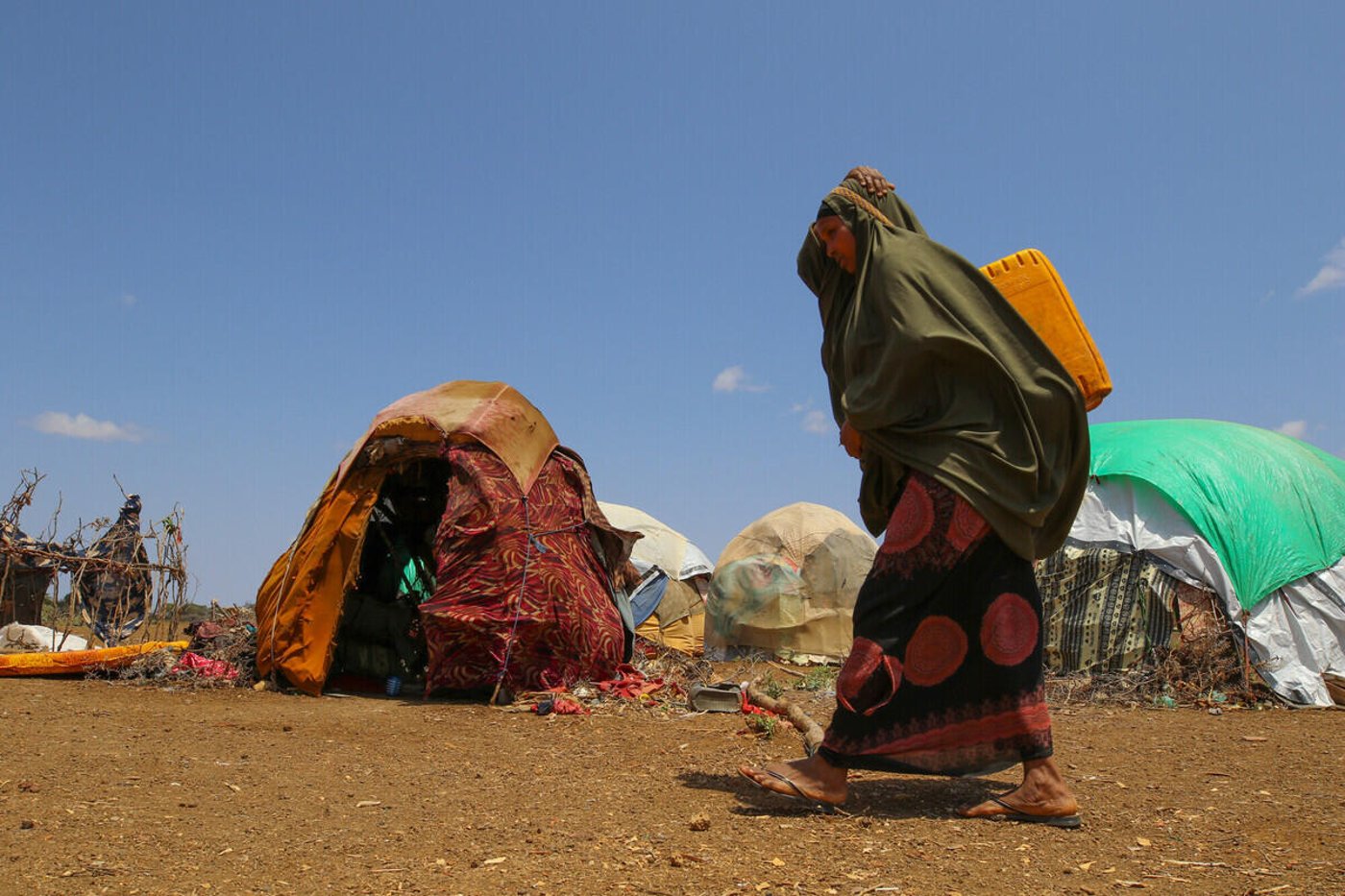More than 300,000 people – mostly displaced families living in overcrowded settlements and rural communities across Somalia – have lost access to clean and safe water due to the scaling back or shutdown of water trucking and sanitation systems. Water and sanitation funding stands at less than 12 per cent of what is needed, forcing aid agencies to make agonising choices amid rapidly rising needs.
At the start of 2025, the UN appealed for 1.42 billion US Dollars to assist 4.6 million people in Somalia, yet only 17 per cent of that funding target has been met as of today. Brutal funding cuts have forced aid agencies to slash their target by 72 per cent, aiming to reach just 1.3 million people at a cost of 367 million US Dollars.
“The scale down of the humanitarian response in Somalia does not mean fewer people need aid; it means more than three million Somalis will be left to fend for themselves,” said Mohamed Abdi, NRC’s Country Director in Somalia. “These cuts are costing lives. We are already seeing a deadly rise in waterborne diseases, especially among children under five. Families are walking for hours to find water, often dirty and unsafe, because the water points they once depended on have gone dry.”
From January to July this year, Somalia reported over 6,550 cholera and acute watery diarrhoea cases, including nine deaths, with more than 1,000 new cases recorded in the last month alone. Nearly two-thirds of the latest cases were considered severe, and half involved children under five.
These surging outbreaks come amid drastic cuts to lifesaving services. More than 150 health facilities have shut down due to the collapse of linked water and sanitation systems. In Southwest State, mobile health teams have dwindled from 74 to just 25, leaving large swathes of the population without access to healthcare.
Displaced mother Hawa Ali, who lives with her eight children in a camp in Baidoa, shared the toll the crisis has taken: “Before, we could fetch water from a nearby water point. Now, we walk for hours looking for water, and sometimes there is no water at all. We do not have water to drink or cook with. Our children fall sick, and there is nothing we can do about it.”
The water crisis is hitting the most vulnerable: internally displaced people living in overcrowded camps, and rural host communities already struggling with years of drought, conflict, and poverty. The hardest-hit regions include Bay, Bakool, Gedo, Galgaduud, Hiraan, Mudug, and Lower Shabelle, where many communities relied on humanitarian-run water systems that are now non-functional due to lack of funding.
In several parts of Somalia, drought has also completely dried up water wells and compromised borehole yields. Water prices in drought-hit areas have nearly doubled, from 70 to 130 US Dollars for 10,000 litres, making it unaffordable for many families. In Puntland, authorities are seeking assistance for 800,000 people whose water sources have been depleted, while in Somaliland, a drought emergency has put some 650,000 people in urgent need of assistance.
“Somalia is being pushed to the brink by the combined impact of relentless conflict, climate extremes, and a sharp drop in international support,” said Abdi. “We are seeing the human cost of inaction every day, in the suffering of children too weak to walk, in the empty jerrycans, and in the avoidable deaths from waterborne diseases. This is a man-made disaster that can still be prevented.”
Notes to editors:
- B-roll and photos for free use and distribution can be downloaded from here.
- Somalia’s 2025 Humanitarian Needs and Response Plan (HNRP) is only 17% funded. WASH-specific funding stands at less than 12% (OCHA). The plan was cut down by 74 per cent from the original 1.42 billion US Dollars so that it will now reach only 1.3 million people of the 4.6 million people originally identified (OCHA).
- Over 300,000 people have lost access to safe water, including IDPs in Baidoa, Dollow, Kismayo, and Beledweyne, and rural residents in Gedo, Galgaduud, and Hiraan (OCHA).
- There have been 6,550 suspected cholera/AWD cases and nine deaths in Somalia between 1 January and 25 July 2025 (WHO).
- More than 150 health clinics have been shut down because of funding cuts this year (OCHA).
- Over 225,122 people were newly displaced in Somalia in the first half of 2025 due to conflict, drought, and floods (UNHCR).
- A drought emergency was declared in Somaliland on 22 July, with authorities requesting assistance for 650,000 people. An estimated 2.5 million people live in areas that are currently classified as moderately or severely affected by the drought conditions across 26 districts, of which 887,000 people are living in severely affected areas in 16 districts (OCHA).
- In Mudug region, water prices have nearly doubled from 70 US Dollars to 130 US Dollars per 10,000-litre tank (OCHA).
For more information or to arrange an interview, please contact:
- NRC global media hotline: media@nrc.no, +47 905 62 329
Somalia is one of the world’s most neglected displacement crises. It may not make the headlines, but the needs are urgent. Share this story and help shine a light on the world's neglected displacement crises. Your voice matters when others remain silent.


